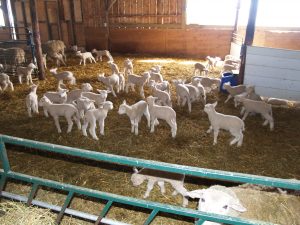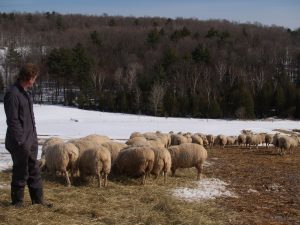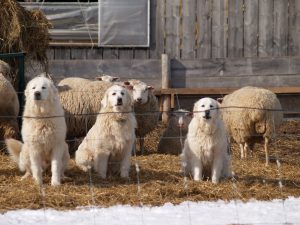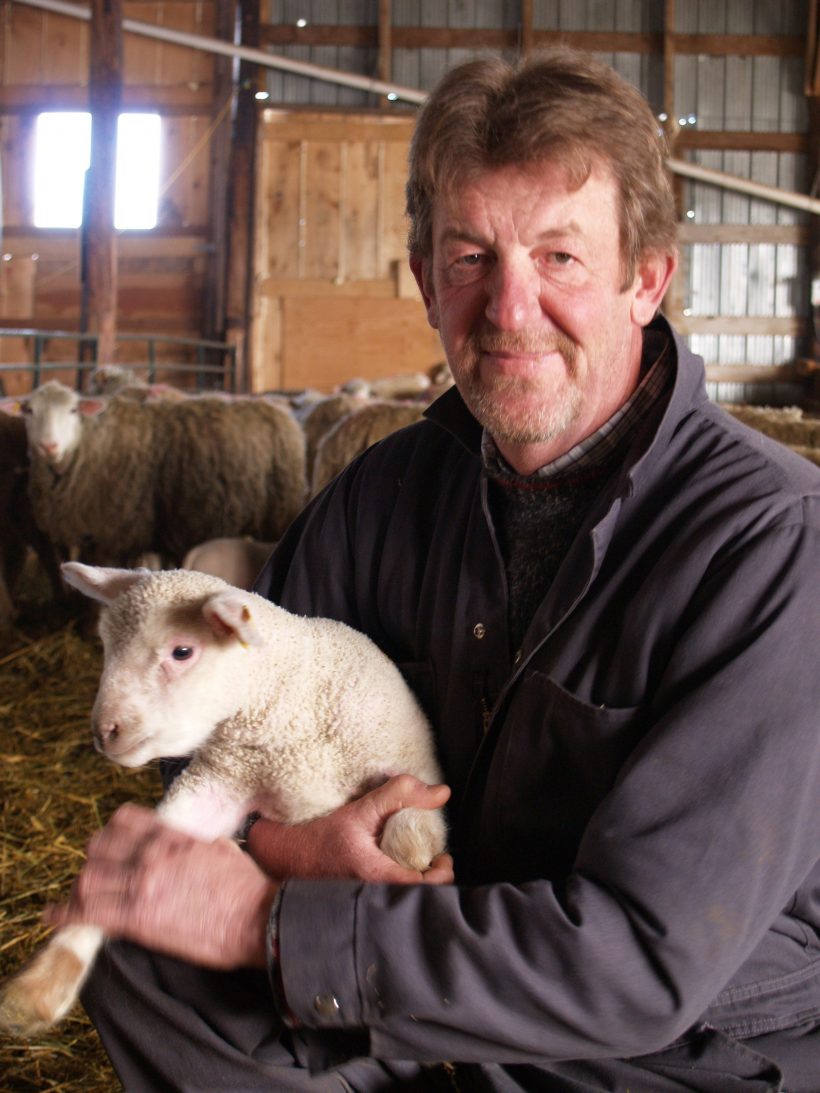ALBERT BOTHA – PHOTOGRAPHER, PRODUCER, SHEPHERD
Although Spring had already officially, by the calendar, come to town Mother Nature had evidently missed the memo and dumped more snow in the neighborhood. However, by March 24 when I visited Albert Botha at his Grafton area Shropshirehills sheep farm blue skies and sunshine clearly provided us with hope and anticipation as the meltdown continued.
Albert Botha, at age 53, has been a shepherd for but three years and was basking in the enthusiasm of raising sheep. 600 yews and 12 rams to be exact.
Born in Jermiston, “just outside Johannesburg”, South Africa, Botha grew up on lamb. “It was on the menu at least 3 days of the week,” he said. “In fact, I used to have lamb chops and chips after school. It’s still one of my favourite meals.”
He started working for the South African Broadcast Corporation when he was 19. Botha emigrated from South Africa in 1987 to seek his fortune and escape the political instability. He bought a one-way ticket to travel the world looking for a place to settle, to put down some roots and ended up in Canada because he found it to be a most stable country with a positive political climate. In Toronto he found himself in the film industry ultimately becoming what he calls a “line producer.” If you run an on-line search you’ll see that Botha has line produced 19 films and 500+ commercials for television. Friend Randy Bird (see The Landowner Dec. /Jan. 2012 Randy Bird’s Passion for Horses) says that “Albert is world class. He won’t tell you that, but he is.”
Botha produced Bird’s Save The Mustang Documentary. “That took 5 years to produce,” said Bird. Botha nodded in agreement. “We had 80 hours of film that involved a lot of hard work,” Bird added.
“It was my most passionate film,” added Botha.
Albert’s wife Meg is Art Director for Watershed magazine. Attempting some rational thought it seemed evident to me that the two met in Toronto due to their common artistic talents.
“No,” smiled Botha. “We met in Australia while I was travelling around the world. We kept in touch.” Mmm – perhaps there was more to Canada’s attraction than a stable political environment?
So, how does a film producer get into sheep farming? Well, as mentioned earlier, he grew up on wholesome lamb – less fat, less cholesterol…and after some 30 years travelling, filming, Albert was ready for a change of pace.
Part of the transition involved moving to the Grafton area seeking some space. “We kept an apartment in Toronto and I’d commute home on weekends.” Then some nearby farmland became available.

In 2010 Botha started with 200 sheep – what he calls a commercial flock of Texel Ridau and Dorset cross. As mentioned, by 2013, he had 600 yews, 125 acres plus another 300 that he rents. “Now I have a two-minute commute to work and get to see the sun rise.” He never tires of the pastoral setting, no matter the time of year. “It’s fantastic to be around the lambs.” Botha uses his 2 border collies to move the flocks along the roadways between pastures like a scene from a James Herriot novel in Yorkshire.
Of course, he admits, even after having done his research and homework, it was a big learning curve. His goal is 2000 yews. “The market is growing. I can sell the sheep as fast as I can grow them.”
Of course, as in any other manner of agriculture, it is not the producer who reaps the significant financial rewards.
A significant “cost of business” is the predacious coyote. In 2012 they lambed traditionally outdoors and lost 70 lambs (almost 40% of the one flock) to coyotes even though he has 6 Great Pyrenees dogs that work in teams of two to protect the sheep. The coyotes are getting smarter. For example, the dogs work the night shift (coyotes tend to be night predators) and sleep during the day. “So,” said Albert’s son Matthew, “the coyotes have started to attack in the early dawn – even during mid-afternoon.”
Kaiti Nixon, a Trent University M.Sc. Candidate and President of the Trent Graduate Students’ Association is studying various coyote deterrents including Fox lights. “They are strobe lights that flash a randomized series of blue and white light 360 degrees.” They are to mimic a person wandering the pasture with a flashlight. (www.foxlights.com) Flags (google “fladry”) are cost effective but labour intensive. She uses yellow caution tape which is a visual deterrent to animals entering the field. Red strobe lights (www.niteguard.com) placed in the centre of the pasture pulse throughout the night supposedly inciting “every animal’s worst fear – the fear of being watched.” Botha also has 5 strands of electric fencing “but the coyotes get though it as well.”
In 2013 all lambing was facilitated in the barn. An adjoining room includes heat lamps for special cases including orphans that require 4 bottle feedings per day. One orphan had been rejected by its yew. “She had triplets.”
They ultrasound all yews so they know which ones carry singles, doubles or triplets. “It’s 99% accurate so we have an accurate number of sheep.” This comes in handy when reporting loss to predators. If a coyote picks up a lamb and takes off there is no carcass to report. Thus, no claim, no compensation. If you have an accurate flock number it’s more helpful because you’ll know how many are missing. Last year they lost just one yew. “The dogs protect the yews well enough,” said Botha. As for the other deterrents, Botha’s impression is that they don’t work. Nixon replied that it’s a little too early to tell. “Last year saw extremes in weather that may have affected predation levels in the province, so we will be completing a second field season.” Frankly speaking she added that these devices won’t be a long-term solution. The devices work on the principle of neophobia – the fear of new/unusual objects. None of these have any physical repercussions and once the coyote figures that out “it’s pretty much game over.” As mentioned earlier the coyotes soon learn how to deal with guard dogs and electric fencing. Nixon even suggests donkeys and Llamas as possible deterrents.

The Northumberland Federation of Agriculture asked the County to reinstate the bounty that might provide hunters with an incentive to help farmers. Botha said that some 25 coyotes were shot between December 2012 and March 2013 “within a 5 mile radius” of his farm.
Ministry of Natural Resources Senior Media Relations spokeswoman Jolanta Kowalski said that bounties were discontinued in the early ‘70s because they were “completely ineffective in dealing with coyote populations.” At $50 per pelt Botha suggests that a bounty would help get the problem under control. “It would also be a lot cheaper for taxpayers than having the provincial government pay compensation for animals killed by predators, based on their market value.” To date, since 2008, $212,107.00 in compensation has been paid out in Northumberland for livestock injured or killed by coyotes for cattle, sheep, goats, and poultry.
As for Albert Botha? His infectious smile optimistically says it all. His goal is clear; his aim is high.

SIDEBAR
In 2012, the Ontario Wildlife Damage Compensation Program received 7,416 reported incidents of farm livestock/poultry, being injured or killed as a result of wildlife attacks amounting to damages in excess of $1.7 million from eligible applicants.
